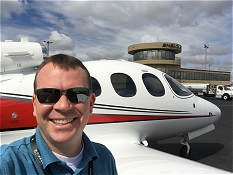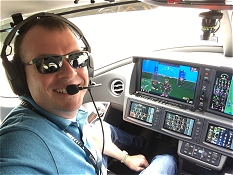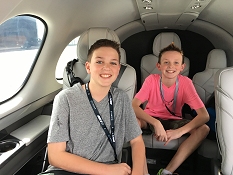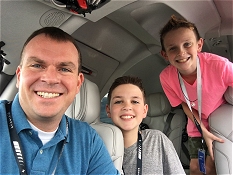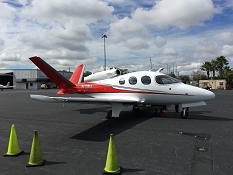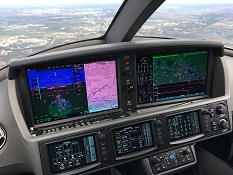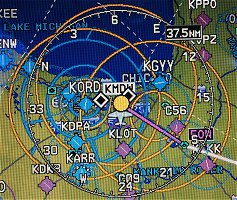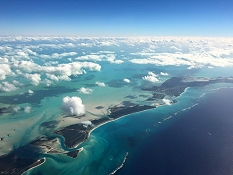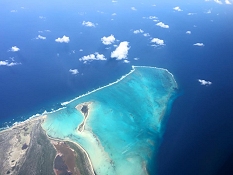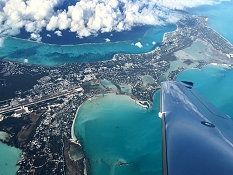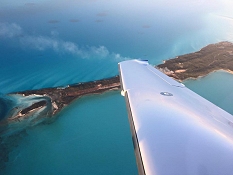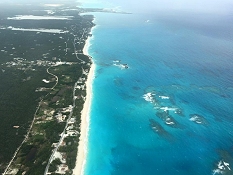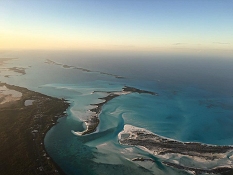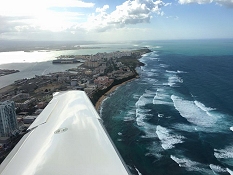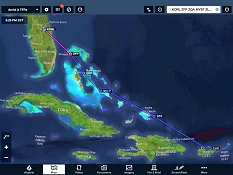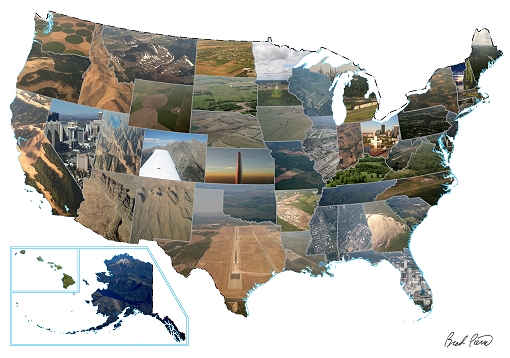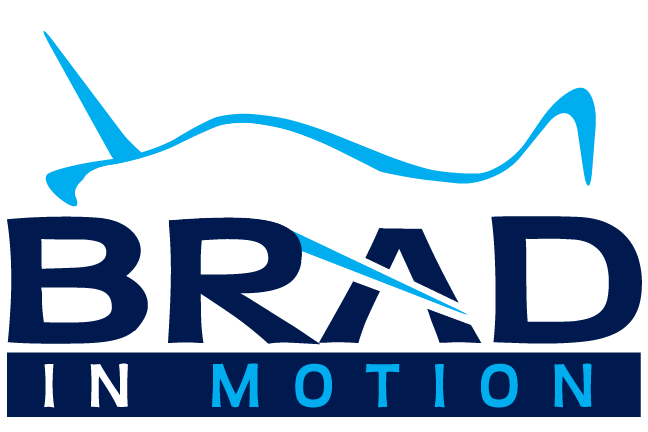Flying the Cirrus Aircraft Vision Jet (SF50)
I recently had the opportunity to take a demo flight in the new Cirrus Vision Jet! The Vision Jet (aka Cirrus SF50) is the world’s first truly personal jet aircraft and comes equipped with the whole airplane Cirrus Airframe Parachute System (CAPS) for enhanced safety. If I had to describe the Vision Jet in one word it would undoubtedly be… AMAZING! Everything from the airframe design, performance and ease of flying to the stellar interior and Garmin avionics suite, the Vision Jet is an absolutely perfect airplane! I hold delivery position #75 and couldn’t be more thrilled with taking delivery of my very own Vision Jet in the near future!
I’ll walk through the demo flight and experience sharing my thoughts along the way, as well as comparing it to my current Cirrus SR22 Turbo Aircraft. I’ve flown my SR22 thousands of hours throughout the United States and beyond so am very comfortable with my piloting skills, though in all honesty, I believe that a pilot with far fewer hours would have no problem transitioning to this new jet. They’ve simply made the systems very intuitive in big part to automation and presentation of systems which they worked with Garmin International to accomplish.
Let’s get going with the flight! I arrived at the Orlando Executive Airport in the morning and was greeted by a group of welcoming Cirrus Aircraft team members, many of whom are also long time friends. On the ramp there were three Cirrus Vision Jets, all different paint schemes with different interiors to give a sense of choices available. I’d be flying the demo flight with Justin who’s part of Cirrus Aircraft’s jet demo team – he’s based out of Denver and is an extremely skilled pilot as well as an absolutely phenomenal guy. We loaded up into a brand new Vision Jet and the first thing I noticed was the layout of the cockpit. Cirrus knew they would have many folks like me transitioning from the SR22 aircraft, so had the foresight to strategically place critical controls in identical positions as the SR22 – throttle, flaps, switches – you name it, when your muscle memory kicks in, the controls are right where you expect them to be. Glancing back over my shoulder was the passenger seating area, perfectly designed and ultra comfortable for all on board. There’s was a surprising amount of roominess in the back – massively more than an SR22, featuring five seats instead of two. The interior really felt on par with the interior of a small Citation or Learjet. They seemed to achieve this feel by implementing a bubble-like design, creating a wide interior feel.
It was time to fire up the bird and Justin helped guide me through the steps. There’s an excellent start-up check-list on the integrated Garmin Perspective Touch displays which ensures the pilot runs through all of the necessary items without missing any critical items. We ran through this sequence and I learned how to do a full weight and balance with the system, determine take-off distance, fuel burn and many other elements relevant to the flight. The process of lighting up the turbine engine couldn’t have been more simple. I felt like the process was as simple as starting a car… turn the switch to “Run” and hit the “Start” button. Everything from that point forward was automated, the system runs through all the necessary starting procedures and automatically terminates and shut down if there’s any problems detected along the way. I’ll pause for a moment here to mention the sound of that jet engine starting… The Cirrus Vision Jet is powered by a Williams International FJ33-5A turbofan engine and the whirl of it starting up is something special – it’s an absolute symphony of sounds to any pilot’s ears. The jet engine roared to life and we were ready to taxi out to the runway. The first thing I noticed when I pushed the throttle forward and began to taxi is how easily it self-centered once I lined it up on the taxiway. I love my SR22, but taxiing can be more challenging simply due to the propeller rotation, as with any piston powered airplane. The Vision Jet taxied with ease and I had no issues smoothly making multiple turns navigating to our assigned runway.
We lined up and were cleared for take-off, this was the moment I’ve been waiting for all these years. When the tower cleared our Vision Jet for take-off, I knew something really amazing was about to happen as we took flight for the very first time. I advanced the throttle forward and we began racing down the runway. The control yoke is initially much heavier than the SR22 (due to not utilizing the same spring cartridge system), but as the speed increased, the controls naturally moved to a neutral position. They quickly felt much lighter and very much like those in the SR22. We lifted off quickly and Justin called for me to raise the gear. A quick grasp of the gear handle and the wheels tucked nicely below us into the belly of the aircraft. Next up, it was time to raise the flaps, instantly I reached right where I always had in my SR22 and felt the familiar flap switch. Such a simple, yet profoundly ingenious process for Cirrus to ensure these items were right where so many of us Cirrus pilots expect them to be located. We were climbing quickly and I was grinning ear to ear, it was as if it was my first time ever riding in or flying an airplane – it was that spectacular! The huge windows provided an incredible view of the world outside, I felt like I was one with the sky with such an enormously wide perspective of my surroundings.
We climbed to an altitude of 14,000 feet and got what’s called a “block altitude” which allowed us to do maneuvers between 10,000 and 14,000 feet. These are common for demo flights so that we would be able to do various maneuvers without conflicting with other traffic in the area. We first just cruised along and I was incredibly impressed with the smooth flight characteristics of this aircraft. From take-off to reaching altitude and leveling off, it was incredibly quite, smooth and extremely easy to maneuver. When we throttled back the power even more for a cruise power setting (accomplished by simply pulling back the throttle lever), the aircraft got even quieter. In the SR22, headsets for pilots and passengers alike stay on from start up to shut down due to the nature of a propeller driven engine. In the Vision Jet, passengers can certainly comfortably take off their headsets if they wish and can easily have conversations with one another. After a bit of cruise time and being shown the various systems, it was time to do some maneuvers. The first were turns simply to get a feel for how the plane handles. I turned left, right, up, down – every control yoke input felt very natural, very much like flying the SR22. The airplane was instantly responsive to changes and so incredibly easy to fly – it literally felt like it was riding on rails since the turns were so smooth and precise. I had absolutely no problem doing maneuvers to ATP (Airline Transport Pilot) standards, yet had only been at the controls for a few short minutes. I know a whole lot of work went into the design of the flight control system and can confirm that the engineering team tasked with this design absolutely nailed it. Next we moved on to slow flight, where the controls remained incredibly responsive and easy to fly even at critically low speeds, just like the SR22. We slowed further for demonstration of an approach to a stall (stall speed is 67 knots) – the control yoke instantly began shaking quickly, this is by design and is referred to as a “stick shaker” which gets a pilots attention to take corrective action immediately. Thought we didn’t experience it, I was told that if we slowed down further the airplane would have jammed the control yoke forward to self-correct the stall condition before it worsened. As always, Cirrus and Garmin never cease to amaze me with their forward thinking approach to safety they’ve implemented across their entire product lines.
We’d had a whole lot of fun in the air and it was time to demonstrate the landing characteristics of the Vision Jet… the only problem was that we were still up at 14,000 feet, yet the airport was only a few miles away. We were headed to Lakeland Airport for our first landing and asked air traffic control for a rapid descent, this was purposely done to show how well the airplane could slow down and descend quickly if needed. I fly into places like Aspen, Colorado where I need to drop from 19,000 to 8,000 feet in a very short period of time, so I was keenly interested in how the jet would handle such a maneuver. I’ve unofficially termed this procedure as doing an “Aspen Approach” regardless of the locale. My jaw practically dropped when I realized how quickly we were able to slow down and descend, it was as if we had pushed a button on an elevator were instantly transformed to a lower altitude. I was once again amazed and memorized by yet another incredible operating characteristic of this beautiful aircraft.
The approach to landing was extremely smooth and very much like that of my SR22. Speeds were very comparable and the avionics guidance was fantastic, especially from a standpoint of situational awareness with the airplane superimposed on one of the Garmin flight displays. I felt like with very little additional training for proficiency I could confidently shoot an instrument condition landing successfully. Of course, I’ll certainly put in quite a lot of hours before attempting such a feat, but it felt good to know the system was so intuitive even prior to receiving formal training. Now it was time to actually land, we crossed the threshold of the runway and Justin talked me through the touchdown sequence of events… and touchdown! No thump, no jolt, no screech… just the wheels gently reconnecting with the earth. I literally asked if we were on the ground, it was that insanely smooth. I was (yet again) shocked, it was perhaps the smoothest landing I’ve ever felt in any airplane I’ve ever flown. The trailing link landing gear was a huge help in making the landing so stellar, but wow… I’ve flown in a lot of jets with the same type of landing gear, but have never experienced such phenomenal landing characteristics in any other airplane.
We taxied back to the start of the runway and lifted off again for a short flight back to Orlando Executive Airport. My second take-off felt even more natural than the first, I was already feeling very much at home at controls of this beautiful aircraft. I also felt like I was really starting to become proficient at the buttonology of the Garmin avionics as well. The avionics suite is made up of gigantic screens that can be mixed and matched to show whatever information is most relevant to the pilot. Everything is controlled by touch sensitive controller units which function perfectly. It was really enjoyable to recognize how much of the buttonology I’d retained even from the first to the second flight going through all of the sequences from take-off through landing once again. As an interesting side-note, there was a Cirrus event later that evening and I showed a friend in attendance all of the features and functions of the avionics suite. He asked how long I’d been using the system, which I smiled and admitted I’d just learned that same day – it’s simply that intuitive! Back to the flight, this second leg was just as enjoyable as the first and we were soon on our approach to Orlando Executive Airport. Once again, I slowed down to SR22 speeds and easily lined up on the approach. Then it happened… the realization that our last “too perfect” landing wasn’t an anomaly – this one was absolutely just as perfectly smooth as well. The manner in which the Vision Jet lands is sure to make every pilot smile and every passenger feel like they’ve got the best pilot in the world at the controls!
After conclusion of the demo flights, I thanked Justin for his absolutely stellar piloting and demo skills, flying with him was an incredible experience and I’d trust my life to him any day of the week. He’s also just a heck of a nice guy too, if you’re ever in the Denver area and are interested in learning more about the SR22 or the Vision Jet, I’d highly recommend meeting him. Of course, many of the folks reading this blog post are Central Florida locals, so in your case, I’ll be happy to introduce you to Charlie Hood who will take great care of you as well in this region.
After parting ways with Justin, I spent quite a bit more time with several other Cirrus team members reviewing paint schemes, color samples, interior leather options and discussing various optional equipment items. The standard airplane comes extremely well equipped, but I’ll surely be selection additional options including satellite phone communications, real-time weather radar, an entertainment display system, an enhanced vision system (night vision camera) and adding the enhanced cargo storage option that extends into the tail cone for carrying snow skis and other larger items.
While we obviously didn’t utilize the parachute system, I’d be remiss if I didn’t mention that this is the first civilian jet aircraft equipped with a whole-airplane Cirrus Airframe Parachute System (CAPS). This same system has been used 71 items on the Cirrus SR series aircraft in real-world conditions and has successfully saved 146 lives. It’s a truly remarkable system, pull the red handle and a rocket launches a parachute which floats the entire airframe down to the ground safely. In the SR22, the rocket launches immediately when the handle is pulled. Cirrus further refined this system in the jet, when the red handle is pulled, the autopilot system automatically tries to get the airplane into an ideal launching configuration, manipulating speeds and other elements, then launches. In the case of a catastrophic failure where these corrections can’t be accomplished within 10 seconds of the pull, the system launches automatically. There are so many times in my flying career that I’ve gazed at terrain below and felt comfort knowing that in the event something unexpected happens, I’ve got a lifeline to keep me safe. I’m thrilled the Vision Jet includes this same game changing safety enhancement.
Before I conclude this post, I would like to thank the great folks at Cirrus Aircraft for making the dream of a personal jet aircraft become a reality. I consider so many of the fine people at this company personal friends and am so proud of all they’ve accomplished. It’s truly been a team effort, from the engineering folks to the test flight teams to the people working in the factory and in the corporate offices. Cirrus is filled with so many talented people whom I admire greatly. They’re good people, they work hard, they care about their customers and they love the aviation industry. My hat is off to all of them for accomplishing what will undoubtedly become one of the most successful products in the history of the aviation industry. Well done my friends, very well done. Thank you for all of your efforts, you’ve created a truly remarkable airplane!
The Cirrus Vision Jet is absolutely, positively, the best, most capable, most comfortable, most amazing personally flown jet aircraft on the planet. I love every single aspect of this incredible aircraft and am so excited and proud to be a delivery position holder (#75). This airplane is truly a game changer, both personally and for business usage. The ways in which it will change my life and those around me are only limited by my imagination. I’m absolutely ecstatic knowing that in the near future I’ll be taking delivery of a new Cirrus Vision Jet!
You can visit Cirrus Aircraft to learn more about the Vision Jet Here
You can download the Cirrus Vision Jet Brochure Here
You can download the Garmin Perspective Touch Brochure Here

